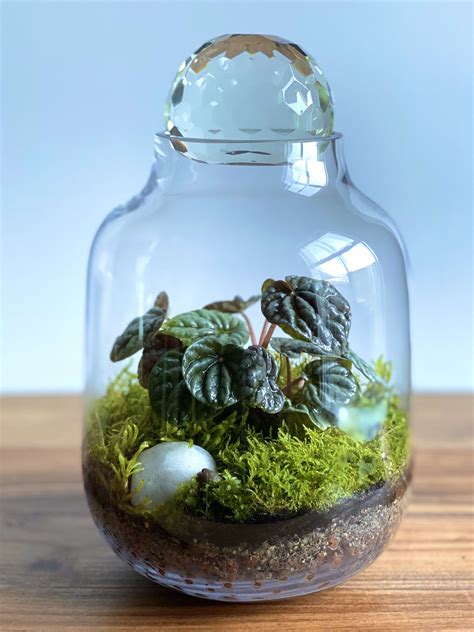Introduction

Bioactive terrariums are captivating miniature ecosystems that replicate the natural habitats of various animal and plant species. In recent years, these living displays have gained immense popularity among hobbyists and environmental enthusiasts alike. By 2025, bioactive terrariums are projected to reach a global market size of $2.5 billion, driven by growing awareness of eco-friendly pet care and the desire for sustainable living.
This article explores the latest trends and innovations shaping the bioactive terrarium industry. We will delve into the advantages and disadvantages of bioactive terrariums, showcase cutting-edge technologies, and discuss emerging applications that are transforming the way pet owners care for their animals.
The Advantages of Bioactive Terrariums
Bioactive terrariums offer numerous benefits over traditional enclosures:
- Self-Cleaning: The closed-loop ecosystem created by live plants, invertebrates, and beneficial bacteria eliminates the need for manual cleaning.
- Improved Animal Health: The natural environment reduces stress levels in animals, promoting their overall well-being.
- Educational Value: Bioactive terrariums provide a glimpse into the intricate workings of ecosystems, fostering environmental awareness.
- Sustainability: They reduce waste and promote eco-friendly practices, such as composting and rainwater harvesting.
Transition to Bioactive Terrariums
- Customizable Ecosystems: Terrarium enthusiasts can personalize their displays to suit specific species and their natural habitats.
- Technical Advancements: Innovative technologies, such as automated misting systems and LED lighting, simplify terrarium management.
- Growing Community: Online forums and social media groups connect terrarium hobbyists, facilitating knowledge sharing and support.
Bioactive Terrarium Technologies
- Automated Lighting Systems: LED lights mimic natural light cycles, providing optimal conditions for plant and animal growth.
- Self-Watering Devices: Drip systems and misters automatically water plants, eliminating the need for manual watering.
- Smart Controllers: Wireless sensors monitor temperature, humidity, and other environmental parameters, providing remote control via smartphones.
Emerging Applications
- Captive Breeding: Bioactive terrariums provide a stable environment for captive breeding programs, ensuring the survival of endangered species.
- Educational Tools: Schools and universities use bioactive terrariums to teach students about ecology and the interconnectedness of life.
- Therapeutic Environments: The calming effects of bioactive terrariums can provide therapeutic benefits for individuals with stress-related conditions.
Advantages and Disadvantages of Bioactive vs. Traditional Terrariums
| Feature | Bioactive Terrarium | Traditional Terrarium |
|---|---|---|
| Cleaning | Self-cleaning | Requires manual cleaning |
| Animal Health | Improved | May be lower |
| Sustainability | Eco-friendly | Less sustainable |
| Setup Cost | Higher | Lower |
| Maintenance | Lower | Higher |
Effective Strategies for Bioactive Terrariums
- Plan and Research: Thoroughly research the specific species and natural habitat before setting up a bioactive terrarium.
- Use Live Plants: Choose plants that are native to the animal’s habitat to ensure compatibility.
- Add Clean-Up Crew: Introduce invertebrates, such as springtails and isopods, to handle waste decomposition.
- Monitor and Adjust: Regularly observe the terrarium and make necessary adjustments to environmental parameters.
Reviews from the Field
“Bioactive terrariums have transformed my pet care routine. My animals thrive in their natural environment, and I no longer need to spend countless hours cleaning.” – Sarah, Terrarium Hobbyist
“The educational value of bioactive terrariums is invaluable. Our students are amazed by the interconnectedness of life within these miniature ecosystems.” – Dr. Johnson, Biology Teacher
“The automated technologies in my bioactive terrarium give me peace of mind. I can monitor the environment remotely and ensure my animals are well-cared for.” – John, Reptile Enthusiast
Market Insights
- The global bioactive terrarium market is projected to grow at a CAGR of 8.5% from 2023 to 2025, surpassing USD 2.5 billion by 2025.
- North America dominates the market, accounting for over 40% of revenue.
- Rising awareness of eco-friendly pet care and the increasing popularity of reptiles and amphibians are key growth drivers.
Future Trends and Improvements
- Advanced Monitoring Systems: AI-powered sensors will provide real-time data analysis and predictive maintenance recommendations.
- Automated Feeding Systems: Device that automatically dispense food at programmed intervals will simplify feeding schedules.
- Immersive Experiences: Bioactive terrariums designed to mimic specific natural habitats will offer immersive pet care experiences.
- Connected Ecosystems: Smart terrariums that connect to home automation systems will allow for seamless integration and remote control.
Conclusion
Bioactive terrariums are revolutionizing pet care and environmental education. Their eco-friendly nature, self-sufficiency, and educational value make them an ideal choice for hobbyists, pet owners, and environmental enthusiasts alike. As technology advancements continue to enhance the functionality and accessibility of bioactive terrariums, they are poised to become the preferred method of animal care in the future. By embracing the principles of sustainability and harnessing the power of innovation, we can create thriving miniature ecosystems that enhance the lives of animals, educate the public, and inspire a greater appreciation for the natural world.





















